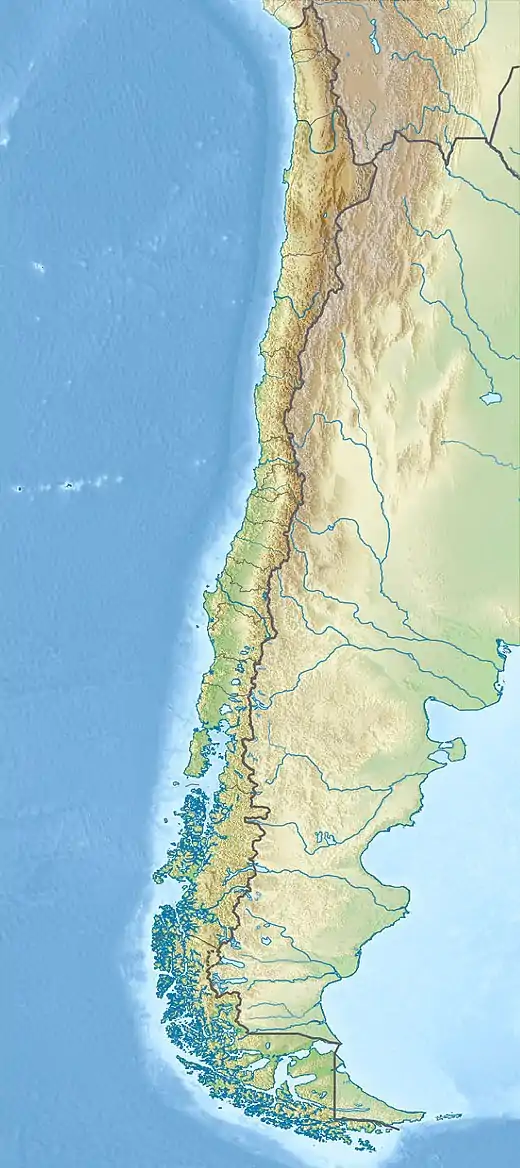Trapa-Trapa Formation
Trapa-Trapa Formation (Spanish: Formación Trapa-Trapa) is a volcano-sedimentary formation of Miocene age in south-central Chile and nearby parts of Argentina. The largest outcrops lie in the Andes, while the Chilean Central Valley host some of the smaller outcrops. The volcanic rocks of the formation are of calc-alkaline character, and are less silicic than contemporary volcanic rocks found further north in the Farellones Formation.[1]
| Trapa-Trapa Formation | |
|---|---|
| Stratigraphic range: Miocene | |
| Type | Geological formation |
| Underlies | Cola de Zorro Formation Campanario Formation |
| Overlies | Cura-Mallín Group |
| Lithology | |
| Primary | Andesitic lava, basaltic andesite lava, pyroclastic rocks, epiclastic rocks |
| Other | Basaltic lava, dacitic lava, tuff |
| Location | |
| Coordinates | 38.0°S 71.6°W |
| Region | Araucanía, Bío Bío & Maule Regions Neuquén Province |
| Country | |
| Type section | |
| Named for | Estero Trapa-Trapa |
 Trapa-Trapa Formation (Chile) | |
References
- Muñoz B., Jorge; Niemeyer R., Hans (1984). "Petrología de la formación Trapa-Trapa y consideraciones acerca del volcanismo mioceno entre los 36° y 39° lat. S (codillera principal)". Revista Geológica de Chile. 23: 53–67. Retrieved 23 August 2016.
This article is issued from Wikipedia. The text is licensed under Creative Commons - Attribution - Sharealike. Additional terms may apply for the media files.